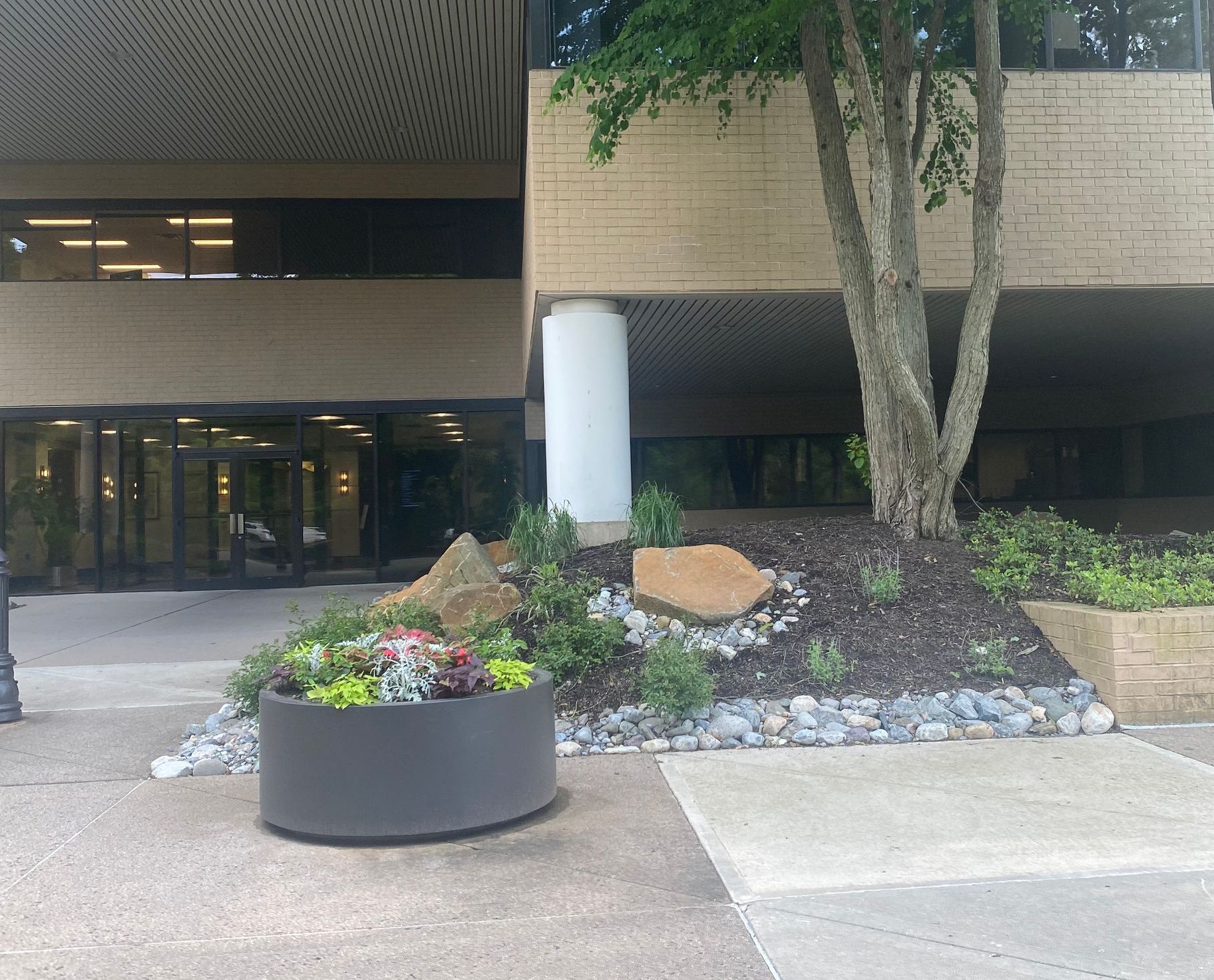Rock Installation
What is Rock Installation?
Rock installation involves placing decorative or functional rocks, stones, or gravel in outdoor spaces to enhance landscaping, provide structural support, or improve functionality. Common applications include rock gardens, pathways, driveways, water features, retaining walls, or as a replacement for traditional mulch in plant beds.
Benefits of Rock Installation
1. Low Maintenance
- Rocks require little to no upkeep compared to mulch or grass.
- They don’t decompose, meaning they don’t need to be replaced frequently.
2. Durability
- Rocks are long-lasting and can withstand extreme weather conditions, including heavy rain, wind, and drought.
3. Aesthetic Appeal
- Rocks come in various colors, shapes, and sizes, adding visual interest and a clean, polished look to your landscape.
- Ideal for modern, rustic, or desert-style landscaping.
4. Prevents Soil Erosion
- Rocks stabilize soil, especially on slopes or areas prone to heavy runoff, preventing erosion and retaining soil integrity.
5. Improves Drainage
- Rocks can enhance drainage by allowing water to flow through easily, reducing water pooling and flooding in your yard.
6. Reduces Weed Growth
- When paired with landscape fabric, rocks act as a natural barrier, suppressing weeds effectively over the long term.
7. Eco-Friendly
- Unlike organic mulch, rocks don’t require frequent replacement, reducing waste.
- They help conserve water in xeriscaping (low-water landscaping).
8. Temperature Regulation
- Rocks can help stabilize soil temperature, especially in hotter climates, by absorbing heat during the day and releasing it at night.
Problems Rock Installation Solves
1. Weed Infestation
- Rocks reduce sunlight exposure to weed seeds, preventing them from germinating.
2. Erosion on Slopes
- Rocks create a barrier that slows water runoff and keeps soil in place, even on steep grades.
3. Drainage Issues
- Rocks improve water flow and prevent waterlogging by allowing water to seep through freely.
4. High Maintenance Areas
- Replacing grass or organic mulch with rocks minimizes the need for watering, mowing, and frequent replacement.
5. Dull Landscaping
- Rocks add texture, color, and variety, making outdoor spaces more visually appealing.
Applications of Rock Installation
1. Rock Gardens
- Create a focal point with a mix of large and small rocks, succulents, and drought-tolerant plants.
2. Pathways and Driveways
- Use gravel, crushed stone, or larger pavers to create durable and attractive walking or driving surfaces.
3. Borders and Edging
- Rocks can define the edges of flower beds, trees, or walkways.
4. Retaining Walls
- Large stones or boulders provide structural support to hold back soil on sloped areas.
5. Mulch Replacement
- Use decorative rocks in garden beds to reduce maintenance while retaining visual appeal.
6. Water Features
- Incorporate rocks into ponds, waterfalls, or dry riverbeds for a natural aesthetic.

Gravel Installation
What is Gravel Installation?
Gravel installation involves placing small stones or crushed rock on outdoor surfaces for functional or decorative purposes. Gravel is a versatile material used in pathways, driveways, garden beds, drainage systems, and landscaping projects. It comes in various sizes, shapes, and colors to suit specific applications and aesthetic preferences.
Benefits of Gravel Installation
1. Cost-Effective
- Gravel is relatively inexpensive compared to materials like concrete, pavers, or asphalt.
- It’s a budget-friendly option for large areas such as driveways and pathways.
2. Low Maintenance
- Gravel requires minimal upkeep; occasional raking and replenishment are usually sufficient.
- Does not crack or require sealing, unlike paved surfaces.
3. Improves Drainage
- Gravel promotes water infiltration, reducing water pooling and runoff issues.
- Ideal for preventing waterlogging in areas with poor drainage.
4. Prevents Soil Erosion
- Gravel stabilizes soil on slopes and prevents erosion caused by wind or water.
5. Durability
- With proper installation, gravel surfaces are long-lasting and can handle significant wear and tear, especially in driveways and pathways.
6. Versatility
- Gravel is available in various sizes and colors, making it suitable for functional and decorative applications.
- Works well in modern, rustic, or naturalistic landscaping designs.
7. Eco-Friendly
- Gravel is a permeable material, allowing water to seep into the ground, replenishing groundwater and reducing urban heat island effects.
8. Easy Installation
- Installing gravel is straightforward and can often be completed as a DIY project, saving labor costs.
9. Flexibility
- Gravel adapts to the natural shape of the ground, making it ideal for uneven or irregular surfaces.
Problems Gravel Installation Solves
1. Drainage Issues
- Gravel improves water flow, solving problems like standing water or water pooling around foundations.
2. Soil Erosion
- Acts as a stabilizing layer to prevent soil from washing away on slopes or in heavy rainfall areas.
3. Weed Growth
- When paired with landscape fabric, gravel suppresses weeds by blocking sunlight and reducing soil exposure.
4. Cost of Hardscaping Materials
- Replaces more expensive materials like concrete or brick for functional surfaces without compromising durability.
5. Aesthetic Concerns
- Adds texture and visual appeal to outdoor spaces, enhancing the overall landscape design.
Applications of Gravel Installation
1. Pathways and Walkways
- Provides a stable, durable surface that’s easy to navigate and maintain.
2. Driveways
- Withstands heavy vehicles and offers excellent drainage compared to asphalt or concrete.
3. Garden Mulch Alternative
- Gravel can replace organic mulch in garden beds, adding a decorative touch while controlling weeds and retaining soil moisture.
4. Drainage Systems
- Used in French drains, under downspouts, or as a base for retaining walls to improve water flow and prevent flooding.
5. Patio Base or Outdoor Seating Areas
- Creates a sturdy, natural-looking foundation for patios or seating spaces.
6. Erosion Control on Slopes
- Helps stabilize sloped areas prone to erosion, especially when combined with retaining walls or plants.
7. Water Features
- Used around ponds, fountains, or dry riverbeds for a natural aesthetic.
